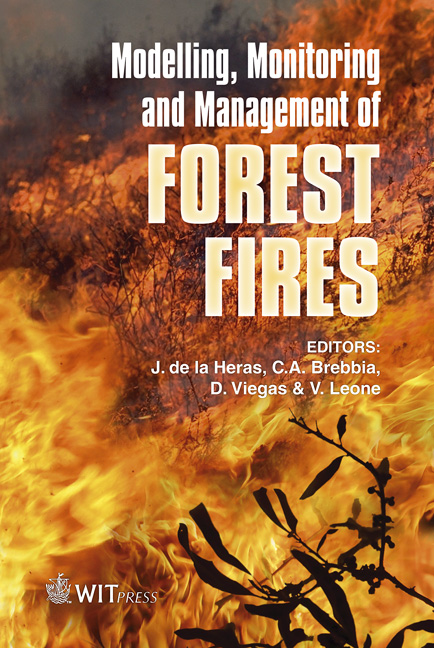Physical Phenomena In Wildfire Modelling
Price
Free (open access)
Transaction
Volume
119
Pages
10
Page Range
203 - 212
Published
2008
Size
1,037 kb
Paper DOI
10.2495/FIVA080211
Copyright
WIT Press
Author(s)
D. Morvan
Abstract
Modeling wildfires is a big challenge in Computational Science. The behavior of fires is governed by very complex physical phenomena including various non linear mechanisms such as: the turbulent transport in the atmosphere, the turbulent mixing between the ambient air and the pyrolysis products resulting from the thermal degradation of the vegetation, the heat transfers by convection and radiation between the flame and the vegetation. During the last decades, progress in the computational resources, allowed the development of a new generation of physical models. This new approach to study the behavior of wildfires is based on the resolution of balance equations (mass, momentum, energy) governing the evolution of the coupled system formed by a vegetation strata with the ambient air located in the vicinity of a fire front. After introducing the main physical phenomena occurring during the propagation of a wildfire, we present some numerical simulations obtained using the FIRESTAR model (EU FP5) for surface fires in grassland and shrubland. Depending on the ratio between the intensity of the wind flow and the buoyant plume above the flame front, the numerical results highlighted two different regimes of propagation: the plume dominated fires and the wind driven fires. Keywords: wildfire behaviour, physical modelling. 1 Introduction and physical considerations Modelling the behaviour of wildfire [1] needs to identify the main physical mechanisms governing the heat transfer between the fire front and the unburned vegetation, necessary to heat and ignite the vegetation and finally to sustain the propagation of the fire. To simulate numerically the behaviour of a wildfire, we have to adapt the mesh size used to discretize the physical domain, to the
Keywords
wildfire behaviour, physical modelling.





